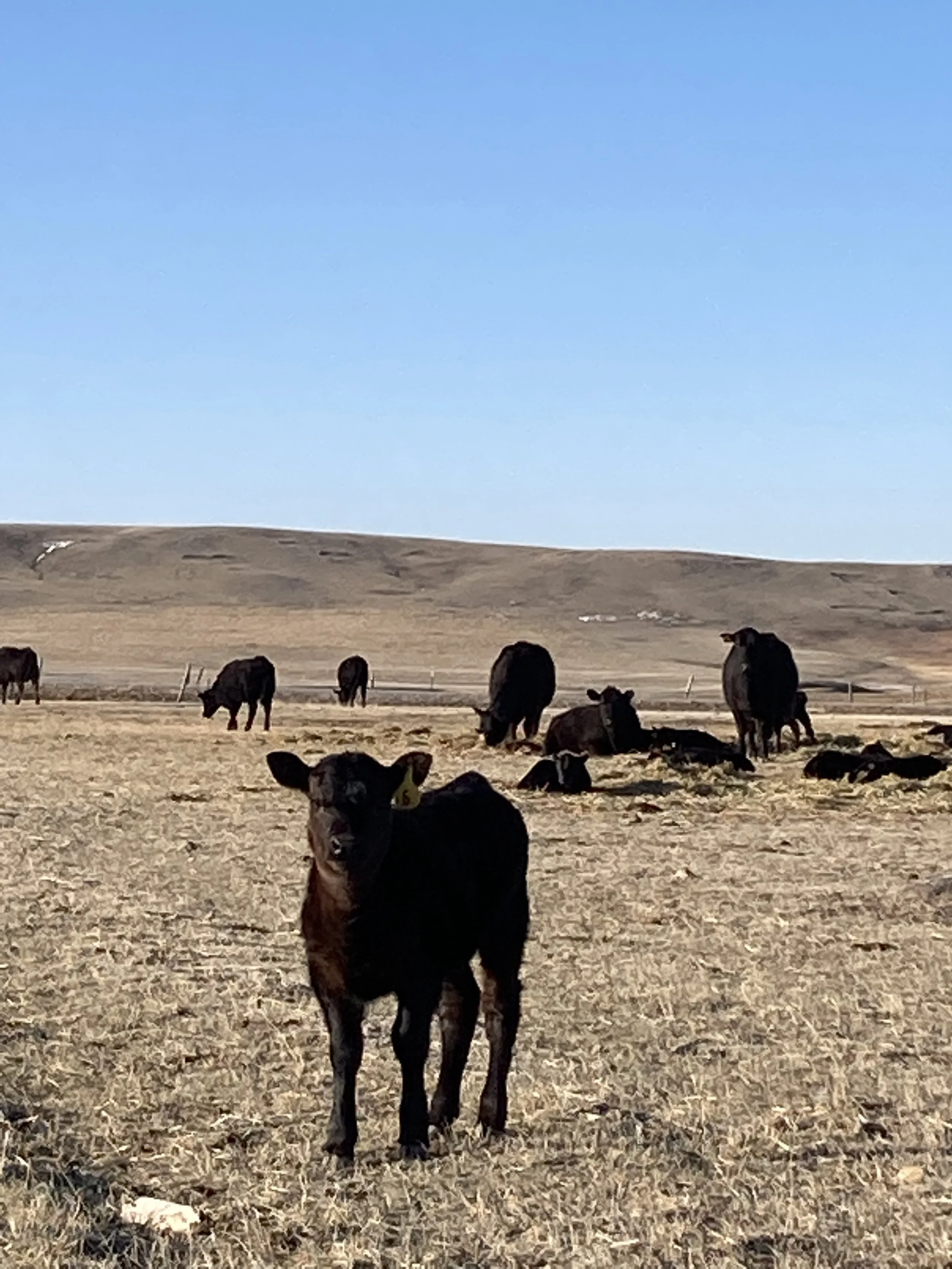Moving Calves
The county road splits my ranch almost in half.
A public gap between pastures is not always convenient.
When a cow jumps a fence, she lands on the road, with the potential to either die by truck or wreck a second fence by jumping to the next pasture.
Sheep that discover succulent, green, roadside grass create new holes in the fence so the cows know right where to jump next time.
Inexperienced calves must navigate not one, but two gates to join their mamas when it is time to enjoy a new pasture.
And the neighbors watch everything that happens.
My neighbors have been watching me feed hay on the south side pasture for quite a while this winter.
I’ve been protecting fragile new grass in my other pastures by keeping the cows on the south side as they calve.
But my haystack shrank to nothing just as some snow quenched the dusty soil.
I needed to get the cows across the road to my corral so I can sort off the ones that I’ll sell.
Moving the cows would not be hard, but keeping the naïve new calves with their mamas is always a challenge.
Typically, cows wander off to graze while their newborns nap, just as human mothers use a nap as an opportunity for a break.
Just as humans share supervision responsibilities, often a babysitter cow will chew her cud among a sleeping nest of calves so the other mothers can eat leftovers, do the laundry or take a quick shower for the first time in days.
Just as human babies rule the domestic schedule, bovine babies do as they please -- until they need to choose between navigating two gates with unfamiliar gravel between them or being abandoned.
I saw two options for moving the herd.
I could saddle up, hurry the cows and calves into a tight bunch, whoop and holler and hopefully terrify the babies into following the mamas across the road.
Only, terrified babies typically dash under a horse and back to where they last nursed.
Or I could coax and cajole the calves slowly, hoping the mamas would meander among the calves to find their baby and lead each one to new grass.
The other day, I read a wise person’s note that said each and every time we interact with cattle we are teaching them how to respond to us. We can either teach them to jump over the fence or we can teach them to go where we want them to go.
So my herd movement became a two-day strategy.
First, I fed hay near the gate.
Next, I opened both gates and fed across the road.
The cows hungrily trotted across the gravel, leaving their babies snoring in the sunshine.
I waited a few hours until the cows ate their fill.
Then I walked among the sleeping infants and woke them up.
A few bawled as they tiptoed uncertainly toward the gate.
Cows came back across the road to check their babies.
Four cars cut through the string of cows, about two minutes apart.
Fortunately, none of them blocked the slow process.
I gently guided each meandering calf toward the gate, letting each one pause instead of panic.
Patience is not my strongest character trait.
I should have added less caffeine to my bloodstream that morning.
My mantra became “slow is fast. Slow is fast.”
One calf bolted up the road.
I froze.
It stopped.
I circled around, hoping it would move away from me.
Another calf trotted the other direction.
I sucked in my breath.
The calf stopped and bawled. A cow nuzzled it to follow her.
Twenty minutes after I started, the herd was across the road.
I could breathe again.
